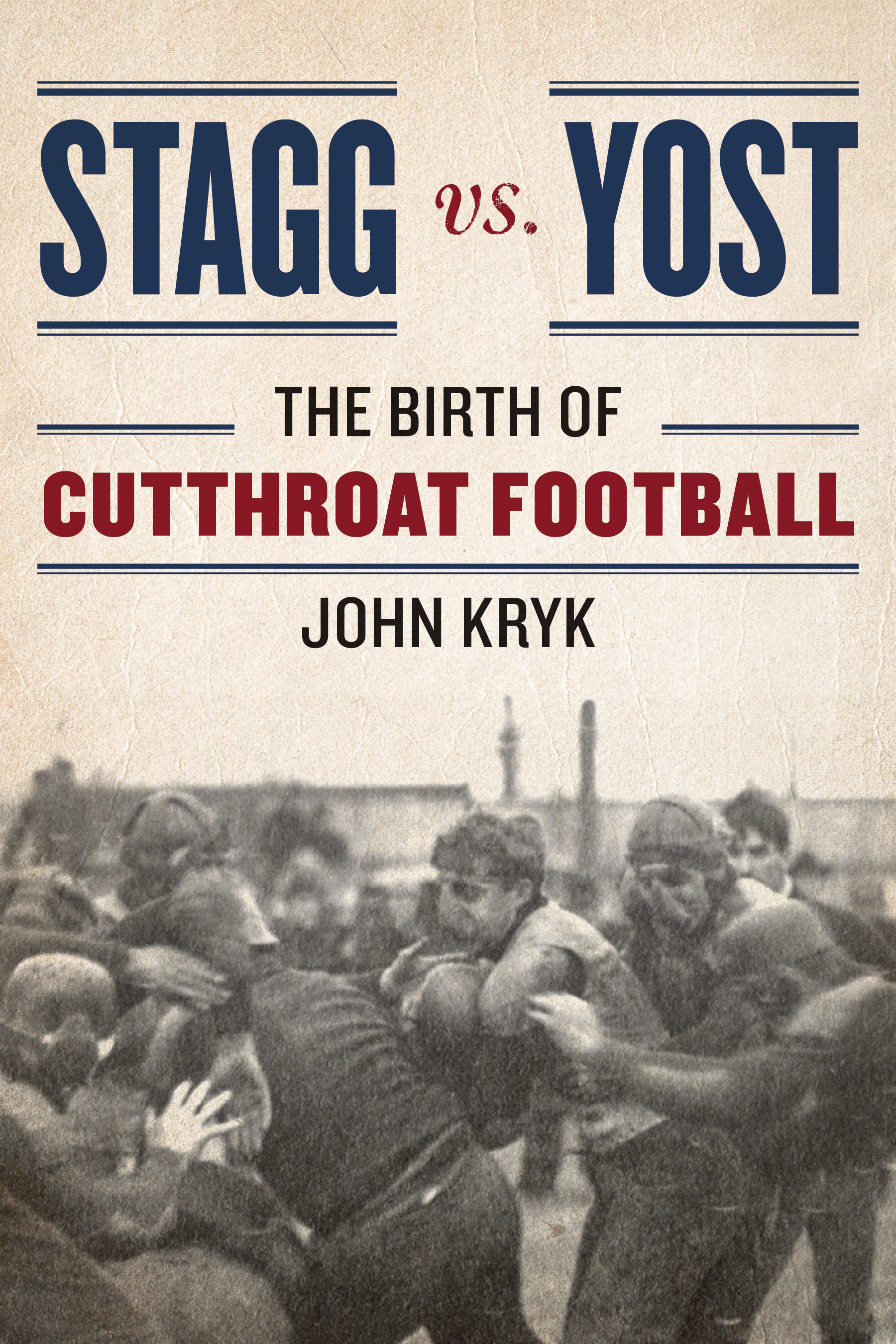Stagg vs. Yost
Stagg vs. Yost
The Birth of
Cutthroat Football
John Kryk
ROWMAN & LITTLEFIELD
Lanham Boulder New York London
Published by Rowman & Littlefield
A wholly owned subsidiary of The Rowman & Littlefield Publishing Group, Inc.
4501 Forbes Boulevard, Suite 200, Lanham, Maryland 20706
www.rowman.com
Unit A, Whitacre Mews, 26-34 Stannary Street, London SE11 4AB
Copyright 2015 by Rowman & Littlefield Publishers, Inc.
All rights reserved. No part of this book may be reproduced in any form or by any electronic or mechanical means, including information storage and retrieval systems, without written permission from the publisher, except by a reviewer who may quote passages in a review.
British Library Cataloguing in Publication Information Available
Library of Congress Cataloging-in-Publication Data
Kryk, John.
Stagg vs. Yost : the birth of cutthroat football / John Kryk.
pages cm
Includes bibliographical references and index.
ISBN 978-1-4422-4825-0 (hardcover : alk. paper) ISBN 978-1-4422-4826-7 (ebook)
1. Stagg, Amos Alonzo, 18621965. 2. University of ChicagoFootballHistory. 3. Yost, Fielding Harris, 18711946. 4. University of MichiganFootballHistory. 5. Football coachesUnited StatesBiography. 6. FootballUnited StatesHistory. 7. FootballCorrupt practicesUnited States. 8. College sportsUnited States. I. Title.
GV939.S7K79 2015
796.332'630977311dc23
2015005157
 TM The paper used in this publication meets the minimum requirements of American National Standard for Information Sciences Permanence of Paper for Printed Library Materials, ANSI/NISO Z39.48-1992.
TM The paper used in this publication meets the minimum requirements of American National Standard for Information Sciences Permanence of Paper for Printed Library Materials, ANSI/NISO Z39.48-1992.
Printed in the United States of America
Introduction
U.S. President John F. Kennedy in 1963 said of Amos Alonzo Stagg, on his one hundredth birthday, Few men in history have set so persuasive and shining an example as teacher, coach and citizen.
Stagg lived for such tributes. As a young man, however, his burning desire to win eclipsed even his maniacal mission to be seen as Americas most incorruptible sportsman.
This is the untold story of how early in his iconic college football career, Stagg covertly punted many of the principles he espoused while nearly working himself to deathall to dismantle one of the most powerful machines the game has known: Fielding H. Yosts Point-a-Minute Michigan Wolverines. With cutthroat flair, Yosts teams from 1901 to 1905 bewildered foes and ran up enormous scores in debuting footballs first hurry-up attack. Eat everybody up, said Yost, a supreme braggart. Big or little, send em all the same way. It drove Stagg to desperation to see his Chicago Maroons annually sent that way. The cutthroat extent to which Stagg schemed to wipe that perpetual victory smile from Yosts face and the depths to which he buried his constantly publicized ideals are revealed here.
This is not the book I set out to write. Rather, as a Michigan football historian and lifelong follower of the Wolverines, I had always wondered why and how Yosts point-a-minute teams could so dominate the opposition. It was as inconceivable then as now that any head coach of a major college football program could start out 5501 over his first five seasons, as Yost did at Michigan. It wasnt so much that Yosts UM teams avoided defeat for so long; rather, its that his Wolverines outscored the opposition 2,821 to 40 in the fifty-six games before experiencing defeat, with fifty of the wins coming by shutout. How could those teams have been so dominant? Thats what I set out to answer, starting in 2009.
Soon after I began poring through the athletic and personal papers of the contemporaneous UM principals at that universitys Bentley Historical Library, the scope of this project necessarily had to expand. I did not yet know about Robin Lesters groundbreaking 1995 book Staggs University, so I believed what Id read for decades in football history books spanning the twentieth century: that Stagg had no equal in the all-American, paragon-of-virtue coaching fraternity. The full centurys worth of Stagg hagiography is so voluminous, so emphatic, and so convincing as to cause any researcher to doubt his discordant finds or to question the conclusions that must inescapably be reached.
These new findings on Stagg underscore the landmark claims first made in 1995 by Lester, who unpeeled the mans myth-fired armor. Lesters sources were impeccable. As the University of Chicago scholar tasked with organizing and logging the contents of hundreds of boxes containing Staggs lifelong personal and professional papers, Lester revealed so many of Staggs fiercely guarded actions behind the scenes. Lester published his expos rather quietly in a University of Illinois Press book. It did not get its due.
New research here reveals many more surprising examples of, and insight into, Staggs early-career hypocrisy. My primary sources are the never-before-published internal correspondence of Staggs archrival athletic leaders at the UM, found at the Bentley Library; Staggs own surviving correspondence with superiors, subordinates, potential recruits, and other universities athletic leaders, stored in the Special Collections Research Centre within the University of Chicagos Joseph L. Regenstein Library; and reports in newspapers and periodicals of the day, so many of which were conveniently and scrupulously scrapbooked for posterity either by or for Stagg.
The core story here is timeless and familiar to all football fans, indeed to all sports fans: one mans obsession to end the pain of a long losing streak to a hated rival.
Football fans captivated by Xs and Os will marvel at how Yost created a virtually perfect football machine, featuring the games first hurry-up offensive attack. No college football historian has previously explained how Yost came to conceive it and achieve it. The Michigan coach was the first to enjoy the many advantages of an extreme up-tempo attack, to which modern fans can relate more than ever.
Football followers who despise the NCAAand who see that governing bodys 46,000 words of recruiting rules as ridiculous, unnecessarily burdensome, bureaucracy flecked, and unfairmight soften their stances after reading this book. Stagg vs. Yost reveals some of the deplorable depths to which coaches, recruiters, and alumni will sink when uninhibited.
To properly tell this story, we must first explain how the two principalsStagg and Yostcame into their positions by 1901 from entirely different directions. And we must set up the state of college football in 1901: how barbaric and strategically stale it had become on the field and how sly recruiting had become off it, with little more than peer pressure and the nave presumption of honesty to curb abuse.
Quoted in Bob Considine, The Unreconstructed Amateur: A Pictorial Biography of Amos Alonzo Stagg (San Francisco: Amos Alonzo Stagg Foundation, 1962), 160.
Eat Em Up, Big or Little, unidentified clipping, October 15, 1901, 1901 clippings scrapbook, Box 45, BICIA, BHL-UM.
Part I
Before 1901
Chapter 1
The Praying Pitcher
Amos Alonzo Stagg
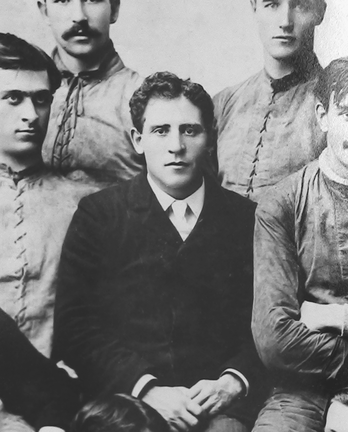
Amos Alonzo Stagg, age thirty-two, in 1894. Source: Amos Alonzo Stagg Papers, Special Collections Research Centre, University of Chicago Library

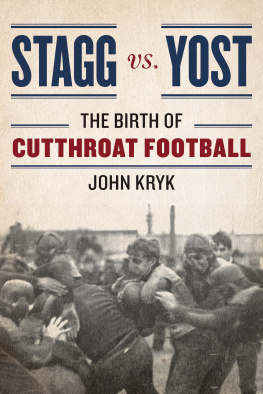

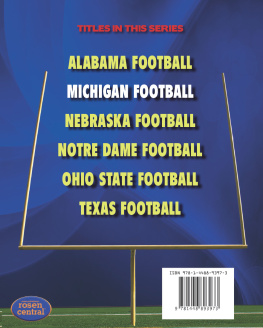
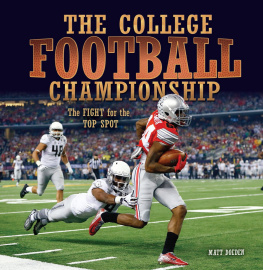
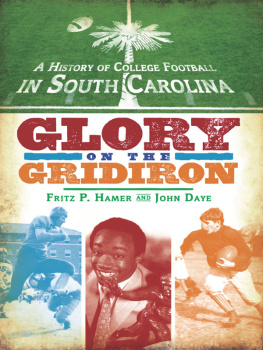
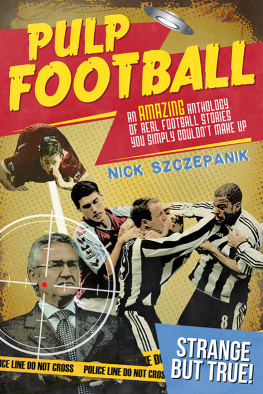
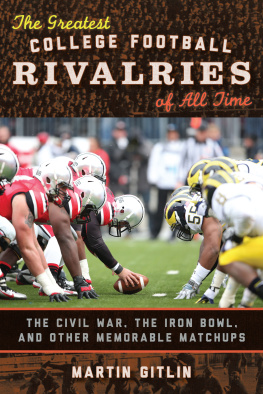
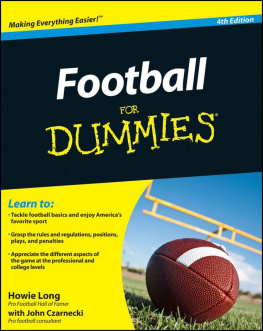
 TM The paper used in this publication meets the minimum requirements of American National Standard for Information Sciences Permanence of Paper for Printed Library Materials, ANSI/NISO Z39.48-1992.
TM The paper used in this publication meets the minimum requirements of American National Standard for Information Sciences Permanence of Paper for Printed Library Materials, ANSI/NISO Z39.48-1992.